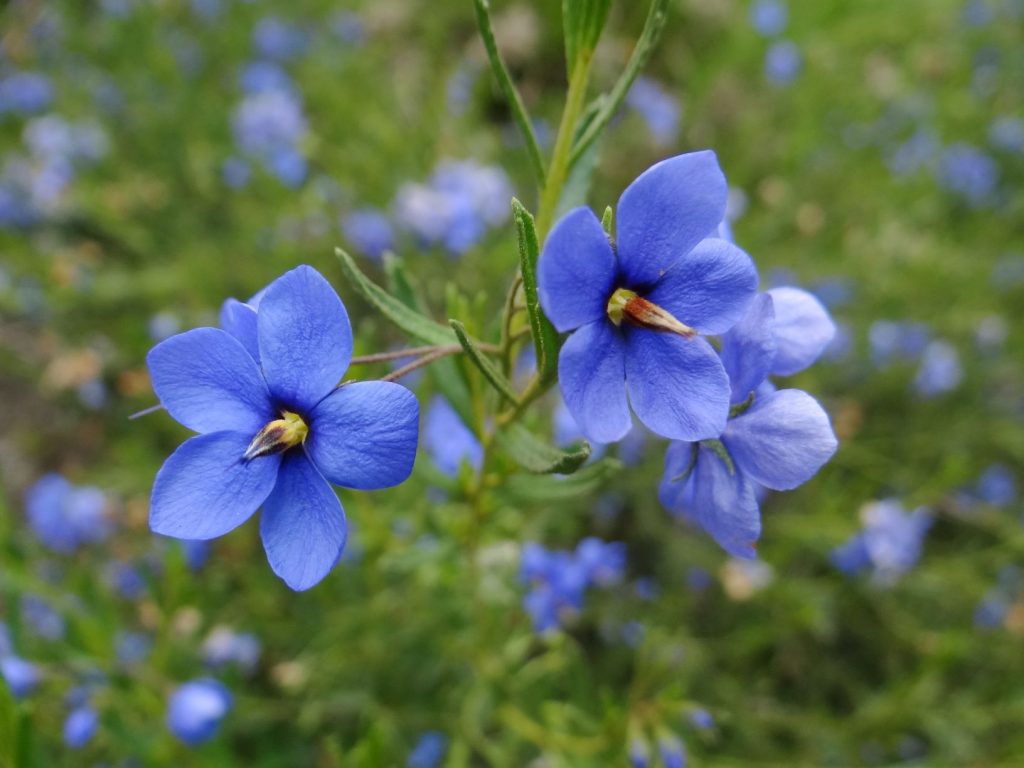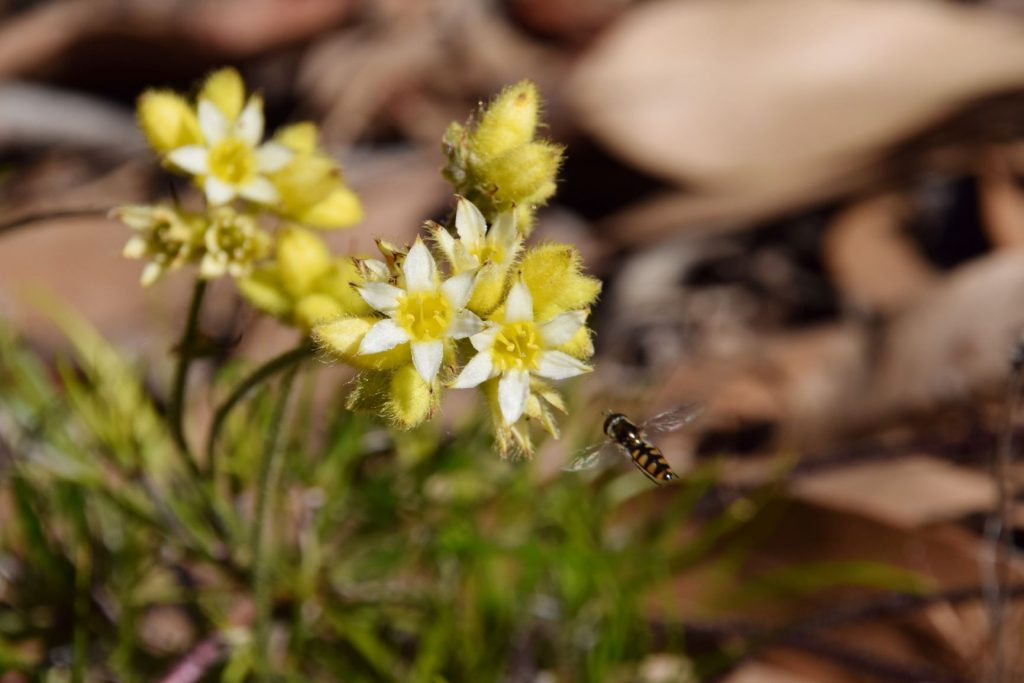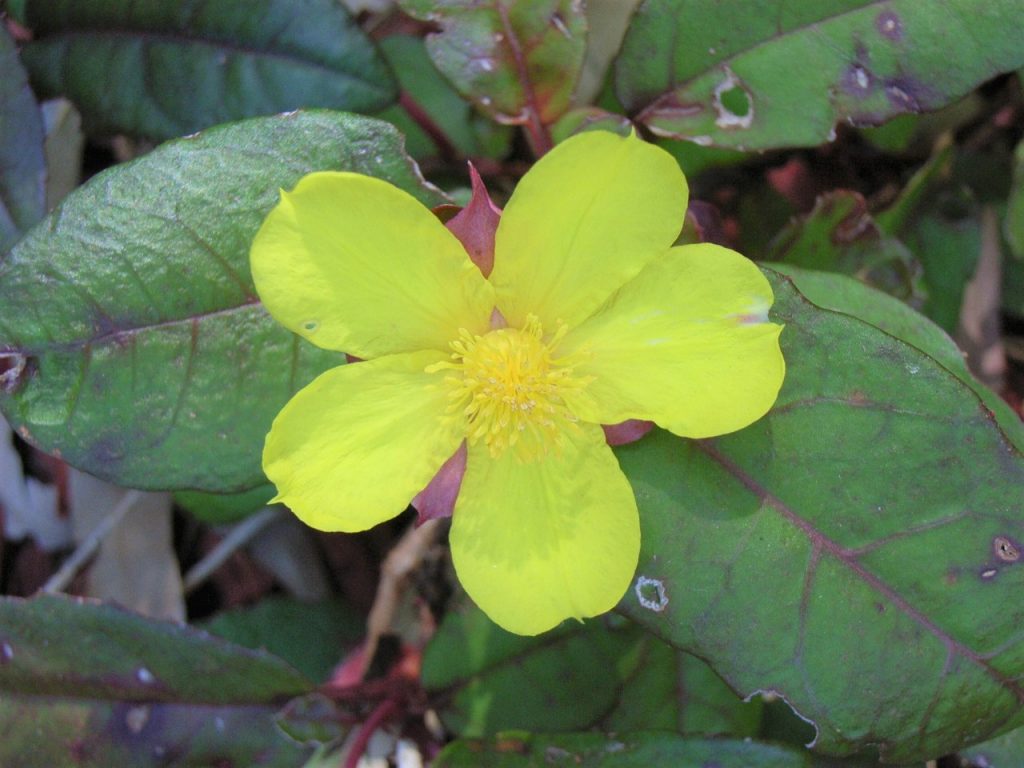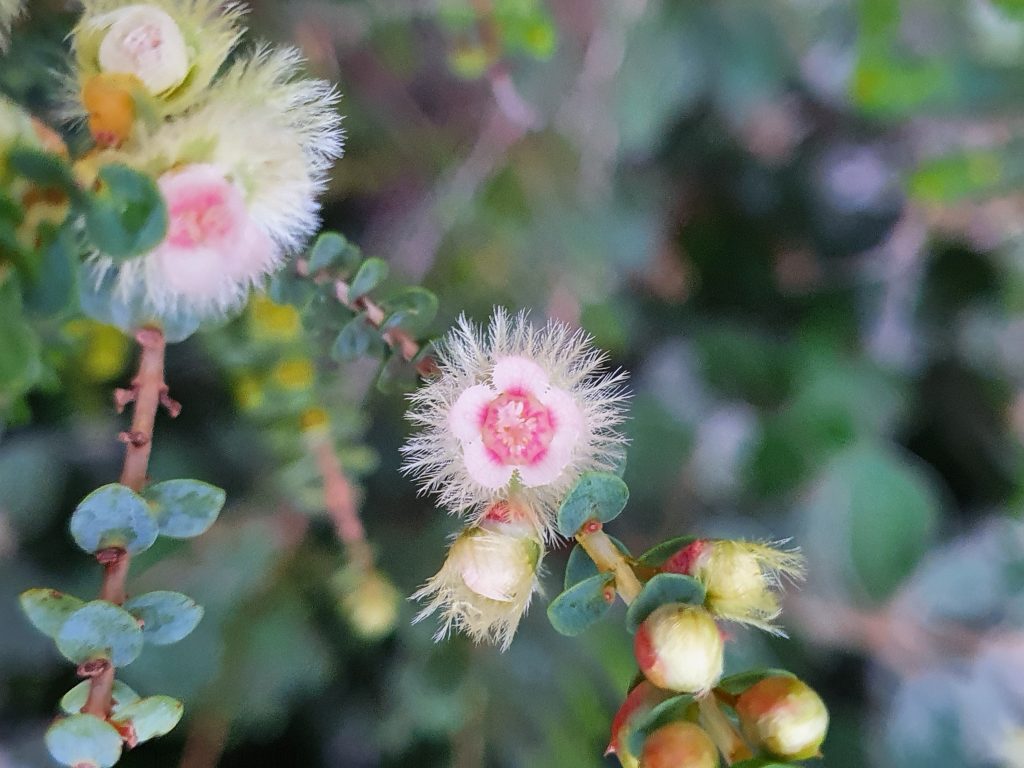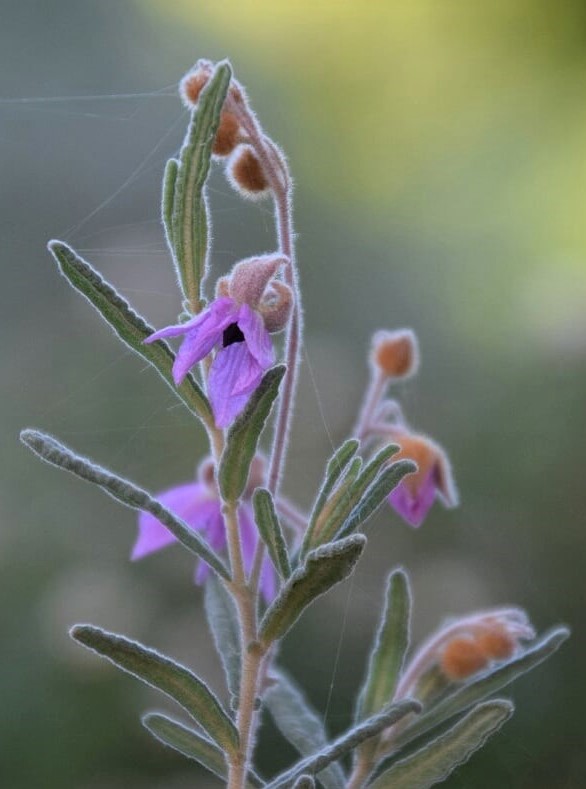Our Friends of Kevin Hoffman Walk member bi-monthly (once every two months) newsletter, “Down Lara’s Creek Garden” features articles of interest to all, not gardeners or those who love Australian Native plants (or both!). Each edition features a plant of the months.
If what you see below has you interested in reading more, why not become a member.
As with all of the plants and flowers on the walk, feel free to look and photograph, but please don’t pick the flowers without permission from our Gardener Matt. We’d like everyone to enjoy the flowers, the birds and insects that they attract and the plants on show.
Our newsletter features:
February & March 2021 (No 23)
Stories:
- Variegation
- Environmental weeds and invasive species
- Bush foods: Native Celery
- Mangroves
- Some of Matt’s Favourite Places: Great Otway National Park
- Feature: Photos from our 2021 calendar
Plant of the months: Halgania cyanea
Also known as the Blue Mallee Flower, the Halgania cyanea is a small perennial herb with a bit of a suckering habit. It is found in all mainland states and territories – commonly found in the far north-western mallee regions of Victoria. The Halgania cyanea is tough – drought-resistant and tolerates light frosts.
Where will you find it on The Walk: Just inside the Walkers Rd entrance.
December 2020 & January 2021 (No 22)
Stories:
- Our 6th Annual General Meeting
- Some of Matt’s Favourite Places: Inverleigh Nature Conservation Reserve
- Our 2021 Calendars
- Australian native carniverous plants
- Feature: Photos from our 2020 and 2021 calendar
- Bush foods: Saltbush
- Recent help on the Walk
Plant of the months: Chamelaucium x Verticordia “Paddy’s Pink”
“Paddy’s Pink” is a garden hybrid between the Chamelaucium uncinatum (Geralton Wax) and the Verticordia plumosa (Plumed Featherflower). Both parent plants are found along the south-western coast of Western Australia.
The shrub grows to around the 2-2.5m high and wide, benefiting from an annual prune after flowering to promote further growth and next years flowering. “Paddy’s Pink” produces it’s pink-purple flowers between September and November. A fairly hardy plant, which is easy to grow, providing you protect a little from the frost. They tolerate full sun, through to quite shaded positions and has some drought tolerance. It grows ok in our alkaline soils, preferring soils that are a little more neutral or acidic.
Where will you find it on The Walk: Between Wingara Drv and Walkers Rd.
October & November 2020 (No 21)
Stories:
- What you can do in the garden now: October & November
- Update on our 2021 calendars – gone to print
- Taxonomy: What’s in a family (part 2)
- Grass tree species
- Feature: Photos from our 2020 calendar
- Bush foods: Wattle seed
- Our healthy ecosystem: animals seen along The Walk
- Some of Matt’s Favourite Places: Peter Francis Points Arboretum
Plant of the months: Conostylis species
Also known as Cone Flowers, Conostylis is a genus of over 40 species and are related to Kangaroo Paws (Anigozanthos species), endemic to Western Australia. They are low-growing, perennial, tufted herbs with strap-like leaves and usually with clusters of flowers.
Most of the species produce yellow flowers but there one of two exceptions that produce white to cream-coloured flowers. Many of the Conostylis species will produce flowers for around three months of the year. They are incredibly hardy, tolerating frosts and mild drought conditions, but prolonged drought conditions may reduce the production of flowers.
Where will you find it on The Walk: Around the Walkers Rd entrance.
August & September 2020 (No20)
Stories:
- What you can do in the garden now: August & September
- Annual memberships & notice of 6th AGM
- Bush foods: Mountain Pepper
- Taxonomy: What’s in a family (part 1)
- 2020 Photo competition: Winners
- Feature: Photos from our 2020 calendar
- Some of Matt’s Favourite Places: Lerderderg State Park
Plant of the months: Hibbertia dentata
Also known as the Trailing (Toothed or Twining) Guinea Flower, the Hibbertia dentata is a climbing (or trailing when grown along the ground) plant that grows to about 1-2m. It produces it’s large (about 4cm) yellow flowers from around August to November and as an added colour bonus, the newer leaves are frequently a purple-red colour.
Hibbertia dentata is considered rare in it’s natural habitat of open forests in East Gippsland and is also found in woodlands in New South Wales and Queensland, growing as an understory plant in lightly shaded to full shade positions.
Where will you find it on The Walk: Around Wingara Drv.
June & July 2020 (No 19)
Stories:
- What you can do in the garden now: June & July
- Lara’s Lime industry
- Foamy trees
- Feature: Photos from our 2020 calendar
- Some of Matt’s Favourite Places: Burrendong Arboretum
- Coppicing
- Bush foods: Lemon Myrtle
Plant of the months: Plectranthus argentatus
Also known as the Silver Spurflower, the Plectranthus argentatus is one of those plants that loves and thrives in a shaded spot – of which we have plenty.
It is a spreading herb found naturally in the coastal northern NSW and southern QLD regions. The leaves are covered with silver hairs and it produces its spikes of light purple-coloured flowers over the summer months. The Silver Spurflower is quite drought resistant and mildly frost tolerant.
Where will you find it on The Walk: Between Wingara Drv and Walkers Rd.
April & May 2020 (no18)
Stories:
- What you can do in the garden now: April & May
- Recording and identifying plants and animals
- Mulch: the good and the bad
- Some of Matt’s Favourite Places: Hattah-Kulkyne National Park
- Native plant viruses
- Feature: Photos from our 2020 calendar
- Bush foods: Kangaroo Grass
- Reminder: Annual memberships
- Feature: Wat dis?
Plants of the months: Verticordia chrysostachys var pallida
Also known as Featherflowers, our Verticordia chrysostachys var pallida is a small-medium sized shrub, 0.6-2m high. It produces its small, delicate yellow to pink flowers between September to December or January in its natural environment, but is in flower on The Walk with it’s second flush of flowers in late March.
They grow in the sandy soils of the Geraldton sandplains and sand dunes.

